PARIAH ARMS
LATEST ARTICLE
Check out our latest article discussing the major variants in the roller lock family of weapons.
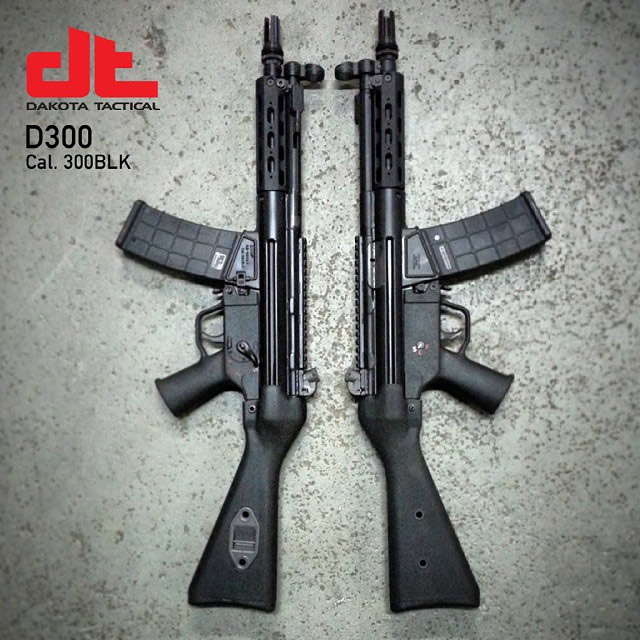
PREVIOUS ARTICLE
SFS Morale Patch Works
SFS is a side project of Pariah producing high quality morale patches made right here in the USA
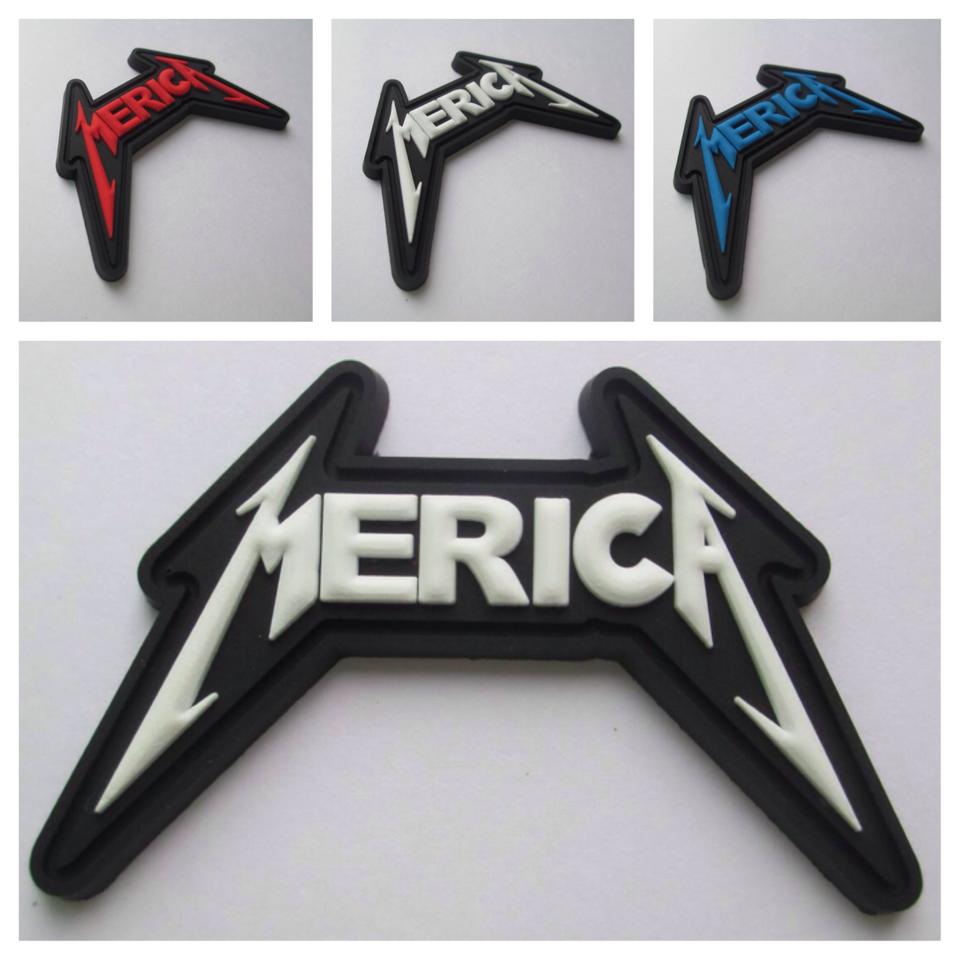
The AR9 9mm Carbine
Since Pistol Caliber Carbines are something of great interest and enjoyment to me in this series I will break the platform down and discuss as many factors as possible to help folks make informed decisions so that in the end they get what they really want out of it. I'll cover PCCs in 9mm, 40S&W, 357SIG, 10mm, 45ACP, and 9x25 Dillon. Basically, with the exception of 380ACP, if you can get it in a Glock...you can get it in an AR. We will start with the simplest build option available, the 9x19 "9mm" we're all familiar with.The Colt 9mm SMG
Sometime around 1982, to be quite honest the history on this carbine is pretty vague, Colt introduced a 9mm version of the M16 using a direct blowback operating system as opposed to the rotating locking bolt direct impingment system traditionally associated with the platform.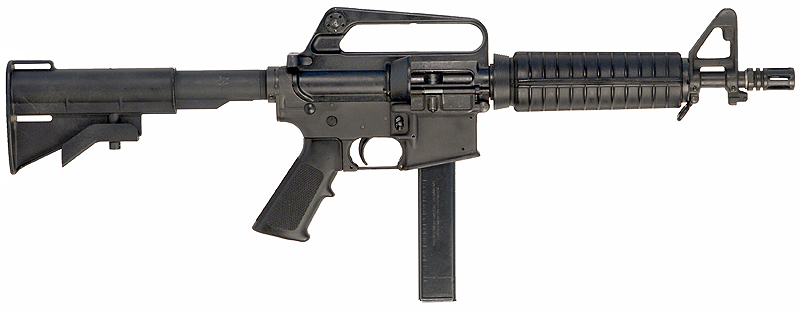
It featured a 10" 1:10 twist rate barrel and fed from steel sheet metal formed magazines copied from the UZI submachine gun (slightly modified for the differing mag catch location). Utilizing a bolt carrier group and buffer with greatly increased mass, compared to the M16, the operating cycle is delayed long enough for the chamber pressures to drop to safe levels prior to extraction without the use of a locking bolt. The upside is that the system is vastly simplified (this is good for our purposes) and the downside is that DBB operated guns are notoriously dirty. So; why do we care about the Colt SMG? Simple....it's a mass production commercial variant which means a wide variety of readily available parts on the open market allowing us to purchase and/or build our own semi automatic civilian legal versions.
I want an AR9
You've decided you want, or you think it's possible you MIGHT want, an AR9 in your collection.....hence you reading this article. So where do we start? Like any other build you're going to have to make a few decisions about what you're after and see what options best suit your needs. The lower receiver of any AR15 type carbine is the base of every build but, with the AR9, there are more choices out there than simply "forged" and "billet" so the first thing we need to discuss is magazines. How do you want to feed your carbine.
The magazine choice will determine, or help determine, what lower is the best fit for your build. While the "standard" is Colt pattern modified UZI mags, there is another option available to you and that is Glock17/18/19 and 26 mags. Glock mags offer more capacity options, cross compatibility with sidearm (you can use them in your rifle or your pistol), and more caliber options which will be further discussed in following articles. The downside is that the Glock lower's bolt hold open system can be a little more finicky and a little less reliable than the Colt. Colt pattern magazines and lowers will offer slightly increased reliability of the BHO, but limit you drastically in your caliber options. The one other detail regarding the Colt pattern choice is that, should you already have a registered Short Barreled Rifle, you can use what is commonly referred to as a "mag block" to use Colt pattern magazines along with the 9mm upper we will discuss later on your existing lower.
Mag Blocks
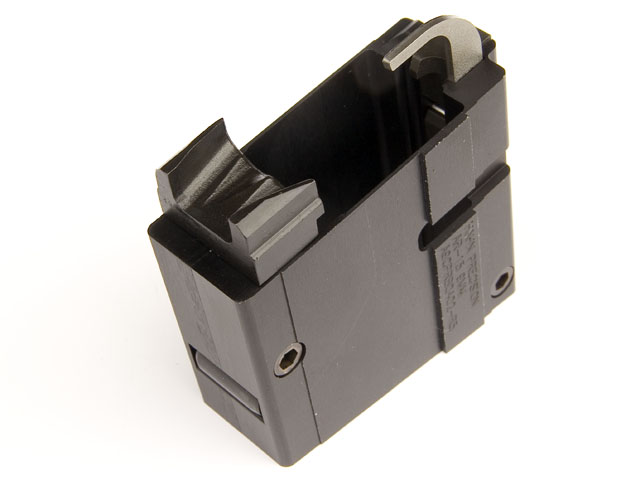
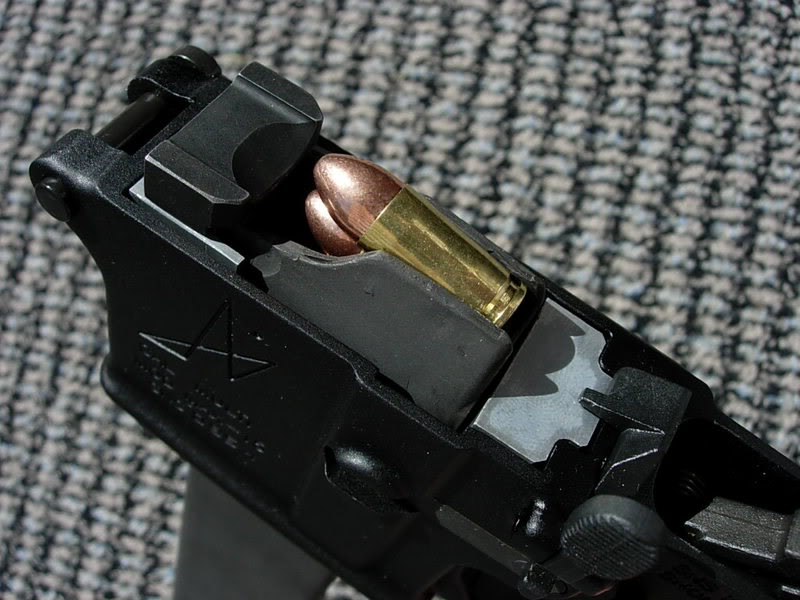
Mag blocks are a device that fills your standard AR15 magazine well and adapts it to the smaller Colt pattern magazine. It contains the ejector (a small fixed piece of metal that sticks up and the shell casing hits after extraction sending it out the ejection port) and a feed ramp to assist the rounds from the magazine to the chamber due to the magazine being farther back from the chamber than standard rifle caliber ammunition. There are also two types of blocks, top loading and bottom loading, meaning which direction they are installed into the magwell. Top loading mag blocks are placed into the magwell from the top with the rifle hinged open and are not compatible with the standard milspec bolt catch. You can swap out the standard bolt catch for a "long finger" 9mm bolt catch but the block will not be readily removable and they are expensive and prone to breaking. Basically you're going to lose your last round hold open with this option. If you're using modified UZI mags they lack the BHO actuator so this will not matter to you but Colt pattern mags use a different follower with the actuator on them. Bottom load blocks like the Spikes Tactical Enhanced offer the same features as the top loaders but are held in place via tensioning screws in front and back.
Please make a note that there are currently, as of the time of this article (09.15.14), no mag blocks on the market for using Glock magazines in standard lower receivers.
Dedicated Lowers
Dedicated lowers can offer a lot more versatility over mag blocks without any of the potential fitment issues associated with mag blocks wiggling around in the magwell or adjustments needed. If you're an NFA stamp collector, however, they're going to mean another lower to register, another stamp to be paid, and another wait to be suffered through before you can build the carbine. They offer you the choice between Colt pattern magazines (and modified UZI magazines that have a second mag catch slot milled for the Colt system although that's outside scope of this article) and Glock magazines.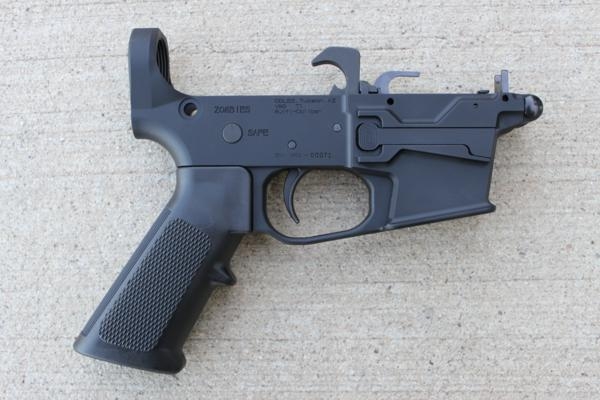
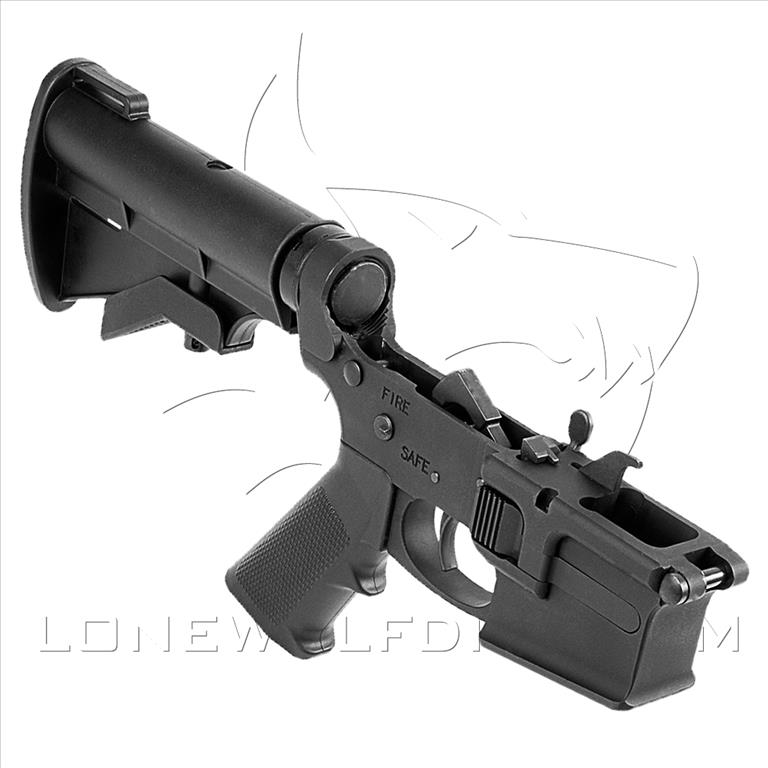
For Glock magazines your options are limited to Lone Wolf Distributers, who manufacture a lower that retains the external appearance of the original AR15 lower, and Quarter Circle 10, who took over the Intellectual Property from DDLES after their collapse and manufactures lowers that are aesthetically designed around the Glock magazine and are currently the only option with a BHO. Glock magazines also offer many more caliber options than Colt pattern mags, a feature which will be discussed further in upcoming articles.
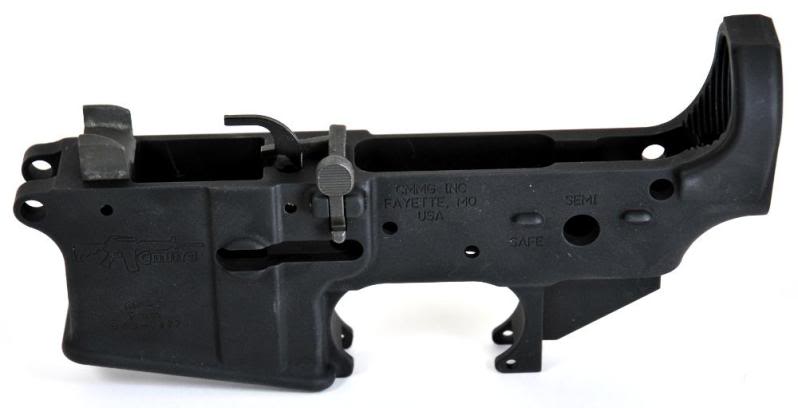
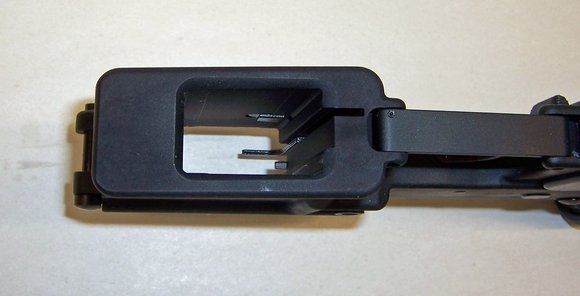
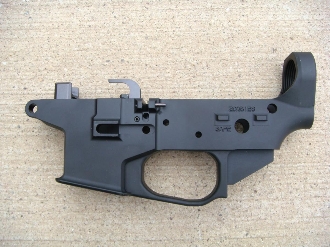
For Colt pattern lowers there are a few more options on the market including Rock River Arms, CMMG, and Quarter Circle 10. RRA and CMMG both retain the external look of a standard lower and, again, QC10 offers a dedicated lower that's aethetically designed for the Colt mags. One thing to note here is that, while the QC10 receivers feature secondary BHO actuators allowing you to use a standard bolt catch from any milspec LPK, the RRA and CMMG lowers requires the 9mm"long finger" bolt catch which is less common, more expensive, and prone to breakage.
Build Parts
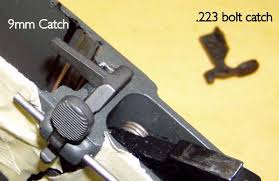
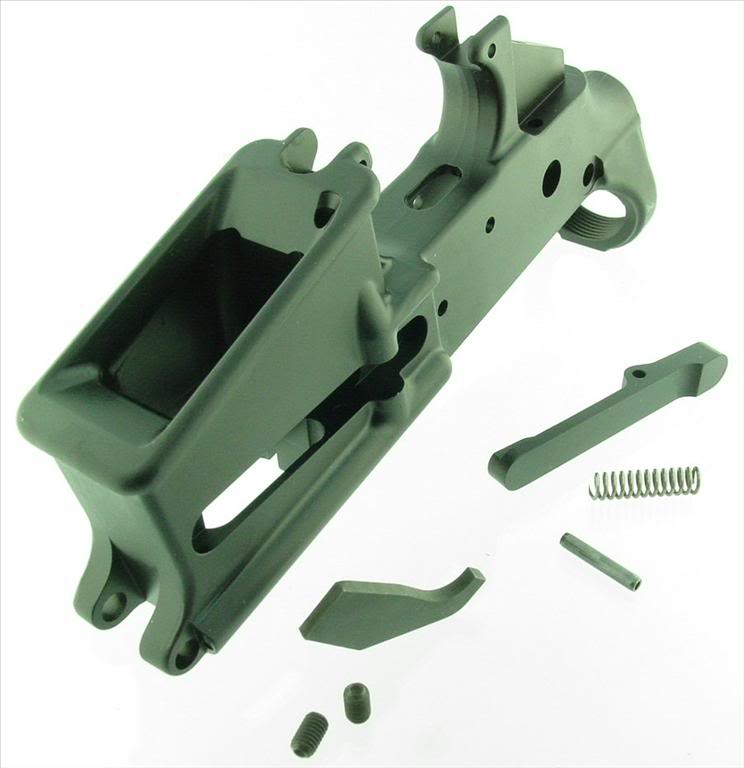
So we've covered the few situations where a dedicated 9mm "long finger" bolt catch would be required above but for most of the rest of the small parts a standard milspec LPK will suffice. Obviously, in the case of the Glock magazine lowers, a milspec magazine catch won't be compatible at all but those lowers are shipped with the correct parts already in place. Also, I can't speak for Lone Wolf but, QC10 requires a different bolt catch spring which comes with your lower so for all intents and purposes it's a non issue. For Colt pattern lowers you may or may not need a 9mm bolt catch depending completely on your parts tolerances. The special 9mm mag catch is nearly identical to a standard milspec catch except that it protrudes a little farther into the magwell to catch the mags.
The BCG

The BCG is available from a few different manufacturers in various forms but the one you will see the most often is from CMMG. It (and most of the others on the market modeled after it) have been improved over the original Colt parts by changing certain aspects of the cyclic action and cutting down on internal wear and tear. The original system required a special 9mm specific hammer because the action of the carbine was so violent it would beat itself to death with a standard mill spec FCG. So to cut down on oddball parts you have to hunt down CMMG solved that problem and their BCG is considered the insustry standard and runs perfectly with milspec triggers.....which leads to a problem for a lot of you high end custom builders out there. The AR9 IS NOT universally compatible with aftermarket triggers. I personally can vouch for Geisselle being incompatible. The carbine will charge and will fire, however, the BCG isnt able to put the hammer back on the disconnect and the hammer will ride home with the bolt. I have not tested any further with any other aftermarket triggers so I can't offer you a list of working options.
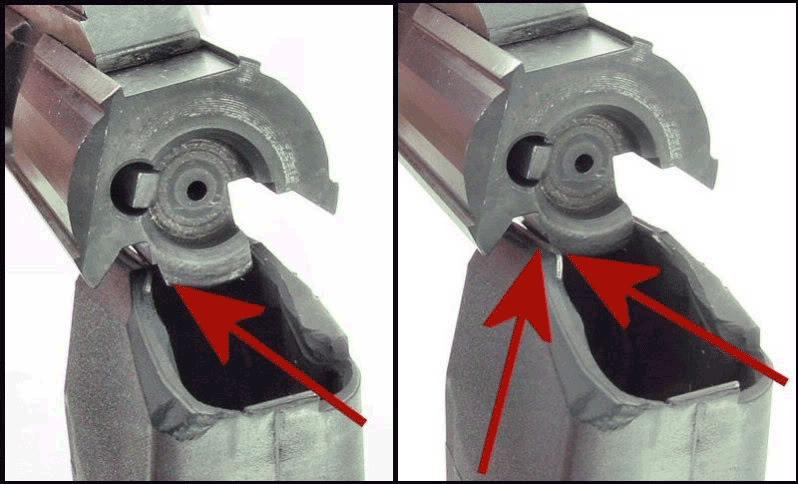
Now that we've discussed the universal truths we have to talk about the Glock versus Colt pattern build differences. They use the same BCG however, because the Colt pattern mags are double stack double feed compared to the double stack SINGLE feed Glock mags, in order for the bolt to function in a Glock system the section underneath the bolt that physically is responsible for stripping rounds out of the magazine has to be thinned down to fit between the narrower Glock feed lips. Currently there are only three ways to get a bolt off the shelf thats ready to go, QC10, JP Rifles, or GunBroker where a few shops seem to keep one or two of them available. For the record, anyone with a steady hand and a Dremel could make this modification themselves if they weren't terribly hung up on how it looks when it's done. Folks looking for a more professionally finished option can have the modification done by ADCO for a nominal fee.
Buffers
Now this is where things get a little bit fiddly....sorry. There's a LOT of different variables and you're going to hear a million different "right" answers as to what to do with your buffer and action spring. There are 9mm specific buffers, JP makes a captured buffer and spring system, some folks use carbine springs, others use double power springs from Wolf and MGI, sometimes it matters if you shoot suppressed or not, sometimes it matters what grain bullets you're using, sometimes the moon is in the house of aquarius and a butterfly flaps its wings in Malaysia........following yet? Me either. I run a 2X power spring from MGI's Hydra line and a H3 carbine buffer. It runs well. Moving on...The only other thing to know about 9mm buffers is that if you use a fixed stock rifle length buffer tube you need a spacer that can be had at Spikes or RRA. Otherwise the buffer can get too much momentum and a running start that can shear off the bolt catch.
Barrels
9mm barrels are all over the place in the market. I've seen barrels everywhere from 1:10 twist rates all the way down to 1:16 twist. What does all of that mean? Well a 1:16 might not be a fast enough twist rate to stabilize a heavy 147 or 158 grain pill in a short barrel but in a long barrel it'll do fine. I've you're building a 16" carbine pretty much anything you can get your hands on is going to be just fine. My 16" rifle has a 1:14 from YHM. If you're building a SBR or AR9 pistol then you need to consider things a little more closely. The original Colt SMG, the Isreali UZI, and the HK MP5 all have 1:10 barrels and while I'm not a ballistician I assume the folks designing and perfecting those had one on staff so I consider 1:10 to be the ideal. QC10, and TROS both offer 1:10 barrels with the QC10 being threaded and the TROS being factory 3 lug mount like an MP5 for QD suppressors.Upper Receivers
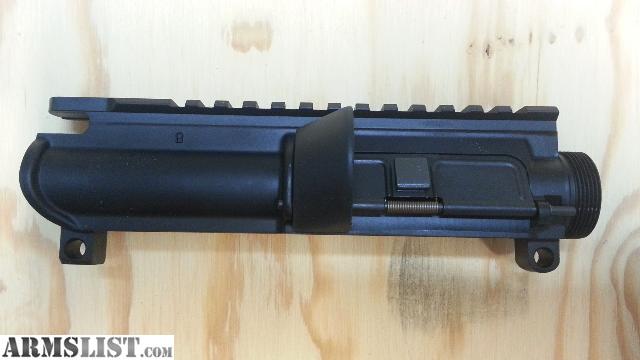
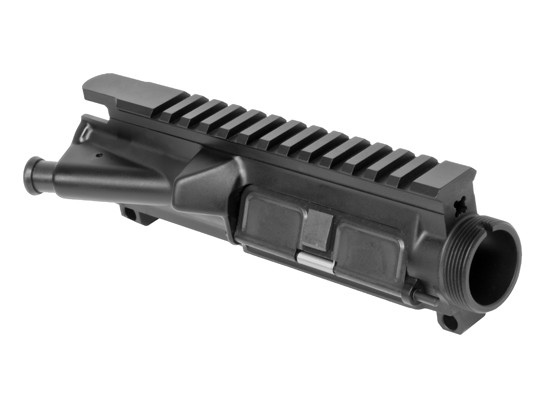

Because the 9mm BCG lacks the ratchet cuts that allow a forward assist to engage the carrier 9mm uppers typically differ from your standard receivers. The "standard" for 9mm is a slick side receiver, lacking the forward assist as well as the brass deflector, that uses a sort of half length dust cover with a large polymer brass deflector taking up the remaining ejection port. Personally I find these uppers to be aesthetically undesirable, not to mention difficult to acquire at times, and went off in search of alternatives for my builds. Obviously one option would be to run a standard upper complete with assist, but due to the lack of engagement, that would be a waste of parts and weight (however miniscule) but the option that I chose was to use a receiver from Aero Precision that lacks the forward assist and retains the traditional brass deflector. In the end no matter your tastes, budget, or personality just about any upper will get you where you need to go.
Those Other Bits And Bobs
So what does that leave us...rails, charging handles, stocks, sights, accessories, and etc? The good news is at their core the AR9 and other AR based PCCs are still basically AR15s which means whatever you would normally run on your rifle will probably be right at home on this build as well. One minor exception I have found is the Magpul BAD Lever and other battery assist levers which are not compatible with QC10 receivers as they hit on the receiver making the last round hold open unreliable."But Charles 9mm is for women and wimps!!"
Well first of all, bite me, and second of all...guess what's coming up next?That's right 45ACP!
So stay tuned for the next installment in this article series from Pariah Arms.
As always if you have any questions about this subject that hasn't been covered here (other than the obvious non 9mm stuff) feel free to email my at Outcast@PariahArms.com
Home
MP5's 101
A Basic Visual Guide to Roller Lock Variants
The AR9 9mm AR15
AR9 Build Pictorial
AR45 45ACP AR15
AR40/357/10mm/9x25Dillon
UZI Build Pictorial
Contact
Links
Pariah Arms LLC
Pariah Arms is a small research and devolpment firm located in West Texas specializing in NFA items.
ALL CONTENT COPYRIGHT PARIAH ARMS LLC
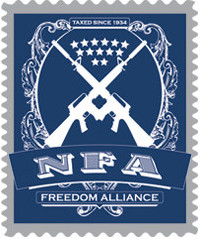
Proud supporter of the NFA Freedom Alliance
If you value your rights and love NFA weapons you should be a member too.
www.nfafa.org


